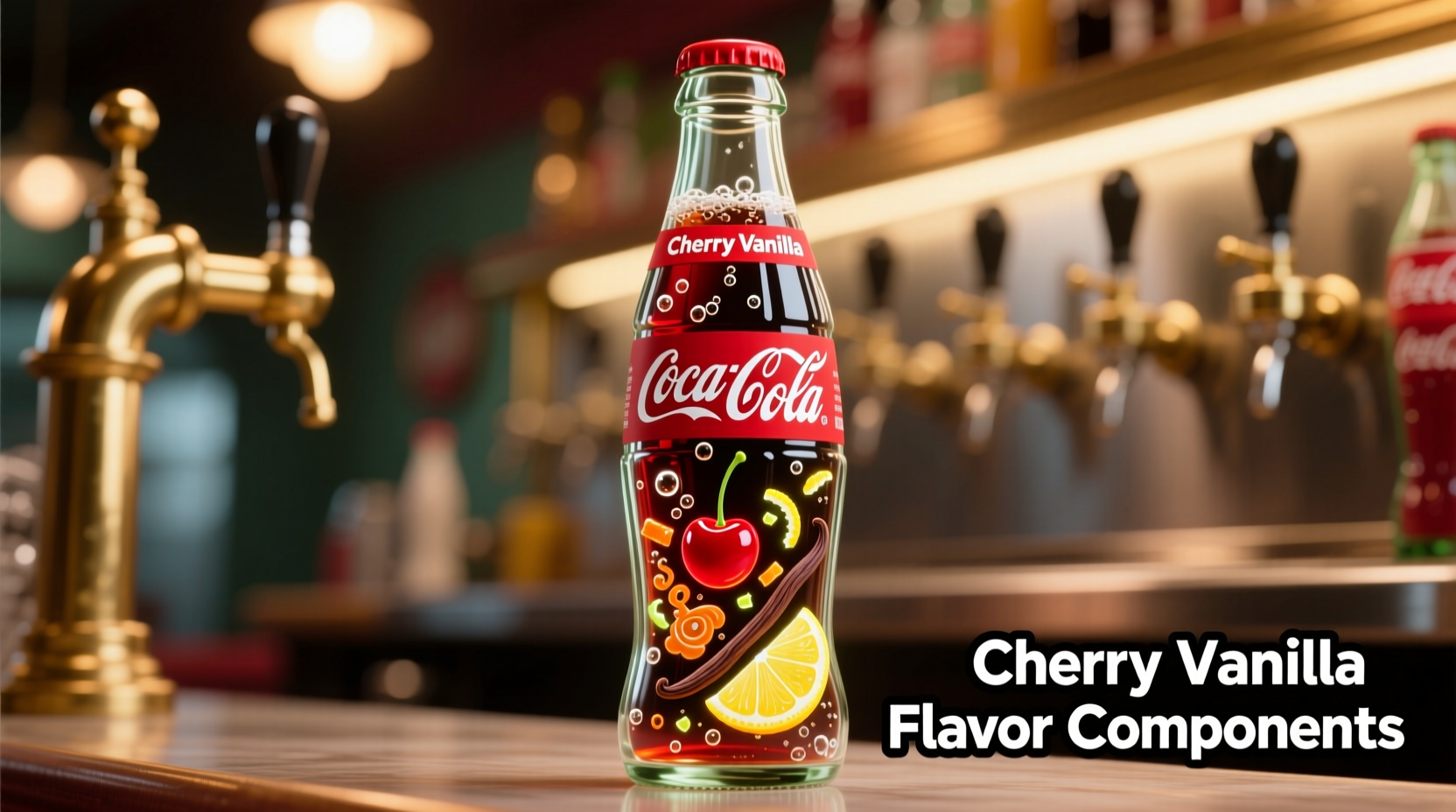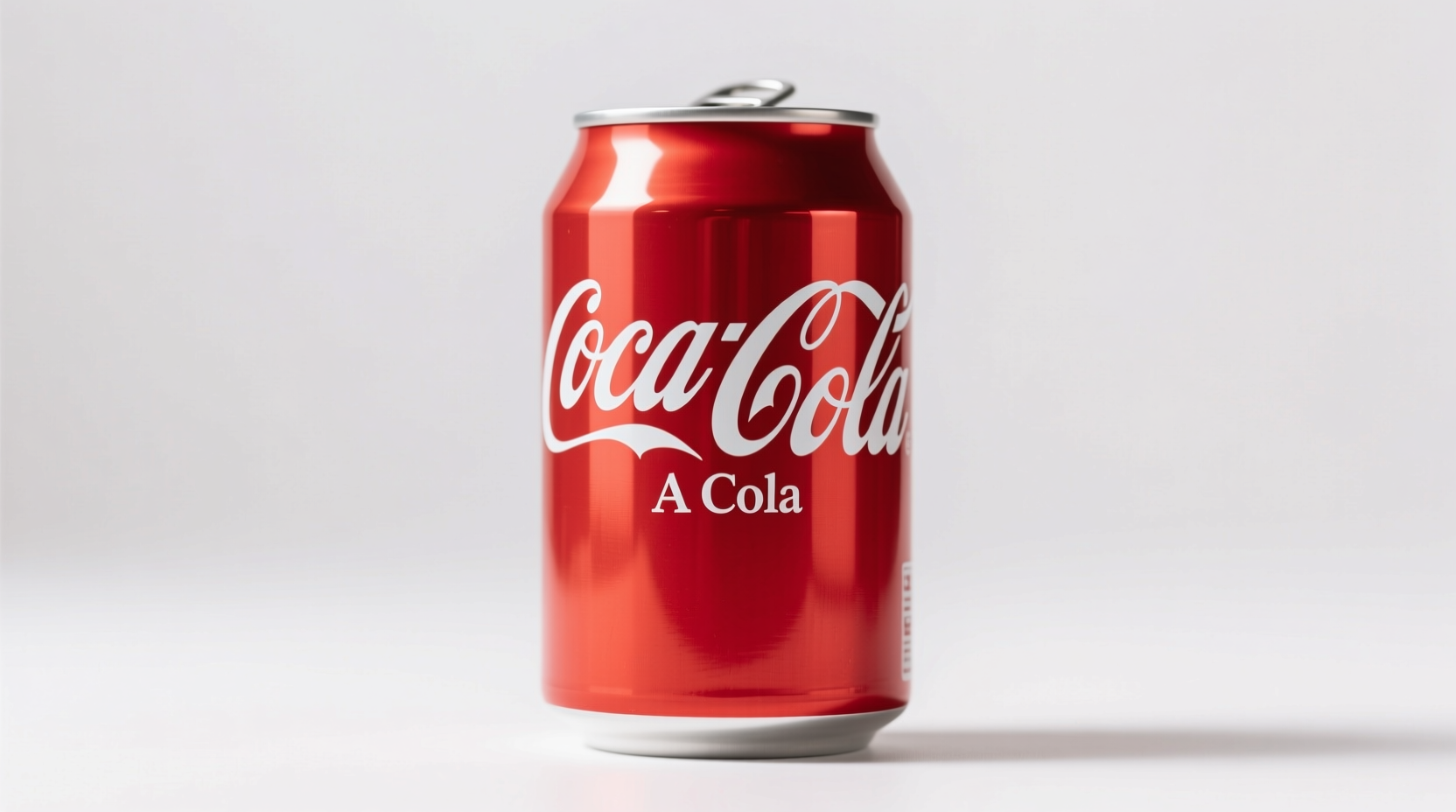What exactly gives Coca-Cola its unmistakable taste? If you've ever wondered what flavor is coke a cola truly has, you're not alone. Despite common misconceptions, Coca-Cola isn't simply "cola-flavored"—it's a complex symphony of natural flavors carefully balanced to create one of the world's most recognizable tastes.
The Core Flavor Profile of Coca-Cola
When you take a sip of Coca-Cola, you're experiencing a carefully engineered flavor profile that includes:
- Citrus notes from oils of orange, lemon, and lime
- Vanilla providing smooth sweetness
- Spice elements including cinnamon, nutmeg, and coriander
- Caramel for color and distinctive roasted notes
- Phosphoric acid contributing tanginess and preservation
Unlike many flavored beverages that prominently feature one dominant taste, Coca-Cola's magic lies in how these elements blend together to create something entirely unique. The flavor isn't dominated by any single component but rather achieves balance through their careful integration.
| Flavor Component | Primary Source | Contribution to Overall Taste |
|---|---|---|
| Citrus Blend | Essential oils from citrus fruits | Bright top notes, refreshing quality |
| Vanilla | Natural vanilla extract | Smooth sweetness, rounding out sharp edges |
| Spice Blend | Cinnamon, nutmeg, coriander | Complex depth, subtle warmth |
| Caramel | Caramelized sugar | Rich color, roasted notes, subtle bitterness |
Why Coca-Cola Doesn't Have a Single "Flavor" Name
Many people mistakenly believe Coca-Cola has a specific flavor designation like "cherry" or "vanilla." However, what flavor is coke a cola fundamentally represents is a proprietary blend that defies simple categorization. The Coca-Cola Company has never officially named the flavor beyond "Coca-Cola," maintaining the mystery that has fascinated consumers for generations.
Food scientists refer to this as a "composite flavor"—a carefully balanced combination where no single element dominates. This approach differs significantly from products like orange soda or root beer, which are clearly identifiable by their dominant flavor notes.
Historical Evolution of Coca-Cola's Flavor
The flavor profile of Coca-Cola has evolved subtly since Dr. John Pemberton first created the formula in 1886. Understanding this timeline helps explain why what flavor is coke a cola has changed slightly over time while maintaining its essential character:
- 1886: Original formula created with coca leaf extract and kola nut, giving both "Coca" and "Cola" components
- 1903: Coca leaf extract removed due to growing concerns about cocaine, replaced with decocainized leaf extract
- 1985: Introduction of New Coke with a sweeter profile, quickly replaced by Coca-Cola Classic after consumer backlash
- 2017: Minor adjustments to sweetener profile as part of global recipe standardization
According to historical records from the Coca-Cola Company archives, the fundamental flavor balance has remained remarkably consistent despite these adjustments. The company maintains that any changes have been minor refinements rather than overhauls of the core flavor experience.

How Flavor Perception Varies Across Different Contexts
An important consideration when exploring what flavor is coke a cola is that perception varies based on several factors:
- Temperature: Served ice-cold, the carbonation and citrus notes become more pronounced
- Container: Many consumers report subtle taste differences between glass bottles, aluminum cans, and plastic bottles
- Cultural background: Taste preferences shaped by regional diets influence flavor perception
- Individual physiology: Genetic variations affect how people perceive sweetness and bitterness
A 2022 study published in Food Quality and Preference found that consumers from different regions described Coca-Cola's flavor using varying terminology, with Americans emphasizing "sweetness" while Europeans focused more on "carbonation" and "citrus notes." This demonstrates how the same product can be perceived differently based on cultural context.
Common Misconceptions About Coca-Cola's Flavor
Several myths persist about what gives Coca-Cola its distinctive taste:
- Myth: Coca-Cola contains significant amounts of caffeine as a primary flavor component
Fact: While it does contain caffeine (about 34mg per 12oz), this contributes more to mouthfeel than flavor - Myth: The "cola" in Coca-Cola refers to kola nut as the dominant flavor
Fact: Kola nut was historically used but contributes minimally to the current flavor profile - Myth: Coca-Cola has a secret "7X" flavoring that makes it unique
Fact: While a "7X" flavoring is rumored, experts believe it refers to the combination of ingredients rather than a single component
Experiencing Coca-Cola's Flavor Complexity
To truly appreciate what flavor is coke a cola, try this simple tasting exercise:
- Chill a glass bottle of Coca-Cola to about 40°F (4°C)
- Pour a small amount into a wine glass to release aromas
- First, smell the beverage—note the citrus and vanilla notes
- Take a small sip and let it coat your tongue before swallowing
- Pay attention to how the flavor evolves from initial sweetness to the subtle spice finish
This method reveals the layered complexity that makes Coca-Cola's flavor profile so distinctive. Professional flavorists describe it as having "three distinct phases": an initial citrus burst, a middle phase of vanilla sweetness, and a finish with subtle spice notes.
Why the Exact Formula Remains Secret
The precise proportions of Coca-Cola's flavor components have been protected as a trade secret since 1886. According to the Atlanta Magazine, the complete formula is known to only a handful of executives and is stored in a secure vault at the World of Coca-Cola museum in Atlanta.
This secrecy isn't just marketing—it's crucial for maintaining the consistent flavor experience consumers expect worldwide. Even minor adjustments to the formula can significantly impact how the beverage tastes, which is why the company approaches any potential changes with extreme caution.
Frequently Asked Questions
What is the primary flavor in Coca-Cola?
Coca-Cola doesn't have a single primary flavor. Its distinctive taste comes from a balanced blend of citrus notes (orange, lemon, lime), vanilla, and spices including cinnamon, nutmeg, and coriander. No single component dominates the flavor profile.
Is Coca-Cola flavored with kola nut?
While kola nut was historically part of the original formula, it contributes minimally to Coca-Cola's current flavor profile. The "cola" in the name references this historical ingredient, but modern Coca-Cola's distinctive taste comes primarily from citrus, vanilla, and spice components.
Why does Coca-Cola taste different in various countries?
Coca-Cola maintains a consistent global formula, but perceived flavor differences can occur due to water composition variations, local manufacturing processes, container types (glass vs. plastic), and even cultural expectations affecting taste perception. In some markets, regulatory requirements may lead to minor ingredient substitutions.
What gives Coca-Cola its unique aftertaste?
Coca-Cola's distinctive aftertaste comes from the combination of phosphoric acid (providing tanginess), the subtle spice blend (particularly cinnamon and nutmeg), and the caramel notes. This creates a clean finish that's neither overly sweet nor bitter, contributing significantly to its refreshing quality.
Has Coca-Cola's flavor changed over time?
While the fundamental flavor profile has remained consistent since 1886, there have been minor adjustments. The most significant change was the removal of coca leaf extract in 1903. Other modifications include recipe standardization efforts and sweetener adjustments, but the company maintains these were refinements rather than overhauls of the core flavor experience.











 浙公网安备
33010002000092号
浙公网安备
33010002000092号 浙B2-20120091-4
浙B2-20120091-4